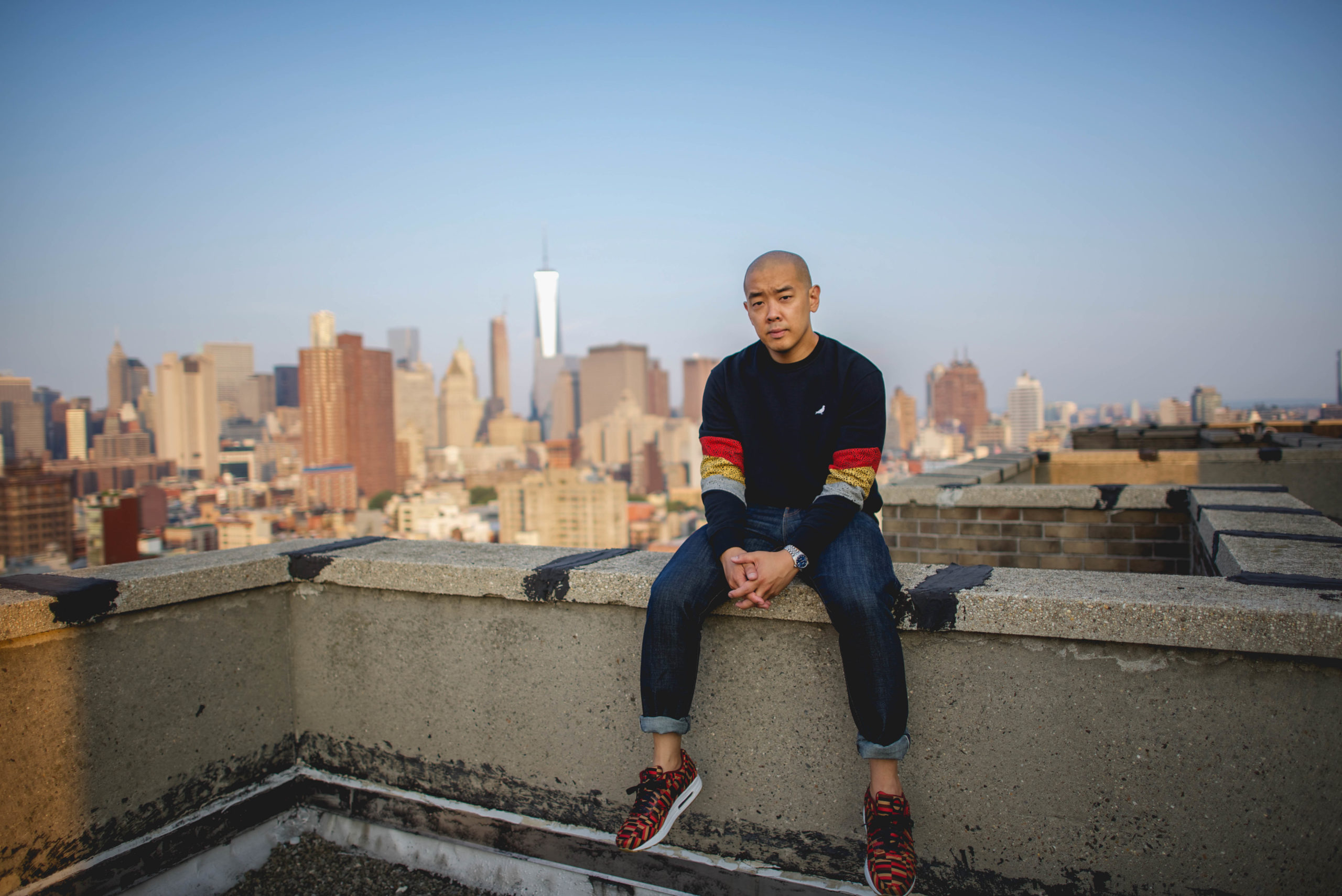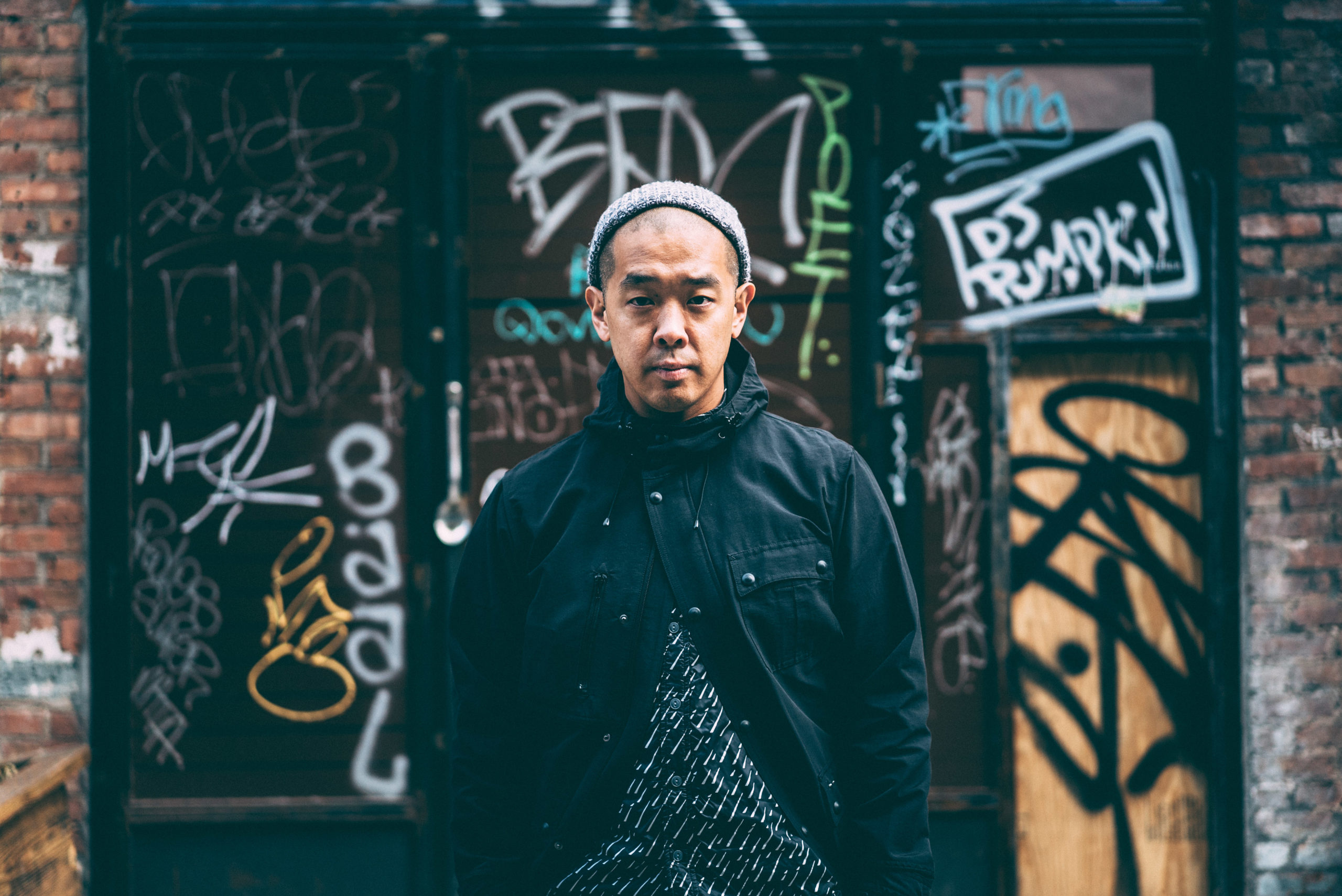Sneakers have evolved from an athletic instrument to cultural symbology, and have now entered the realm of fine art and investments. The re-sell market for exclusive sneakers is estimated to be passing $2 billion annually, art auction houses have added sneakers to their wares (Sotheby’s has a partnership with Stadium Goods to authenticate sneakers) and you can buy stock in shoes that are out of your price range (you can own a 10 percent of an Air Jordan 11 Derek Jeter for approximately $7000 USD).
You can’t spend a lot of time exploring the world of sneaker design and collaborations before the name Jeff Staple comes up. On this writing, you can bid on an original pair of the shoe that launched Staple’s name into sneaker lore (the 2005 Nike SD Low Dunk “Pigeon”) through the online resale website StockX for somewhere between $17,000 and $32,000 CAD. Staple had already been a streetwear designer for eight years prior to that drop that is seen as a key marker for when exclusive sneaker drops changed the business model around selling shoes and clothing.
Since then, his company, Staple Design, has worked with a list of clients and collaborators so comprehensive it would be challenging to come up with names they haven’t worked with.
In February of 2018, Staple and his team launched Business of Hype podcast on Hypebeast Radio. The podcast, now entering season seven, offers in-depth conversations with the people that have shaped the industry around streetwear and is preparing to release season seven.
Jeff explains why he has drawn on the deep relationships he has in the streetwear industry to pull high profile guests who rarely speak publicly about their work to break down how they have built their businesses and brands. “For me, it was really hard to start and do this thing”, he says. “There were a ton of mistakes and not a lot of help…If I can just lend a hand and help a kid, and instead of it taking them 10 years, it will take them three years to do what I did, I’m all for that.”


In the day-to-day, Staple Design has a team of 50 people handling a clothing line, a creative agency, a podcast and all of the events that he is a part of. Inspired by movies like A Few Good Men and his appreciation for the effectiveness of the military hierarchy, Staple breaks down how his team operates.
“I have high-ranking generals in each of those divisions and about a dozen people report up to those generals in each division.” High levels of trust and efficient communication are at the core of the culture that has allowed them to have such an outsized global presence. “I can’t get too far into the weeds on stuff,” he shares. “When it comes to the clothing, for example, it’s still important that I approve. I might not conceive of and design every single article of clothing, but I still create the overarching theme of each season.”
His approach to hiring and building a team has been centred around communication and is encapsulated in a simple story about a social media trailer for a recent episode of The Business of Hype podcast. After taking a look at the first version, Staple’s response was, “nah, I didn’t get goosebumps from it.” As vague as that may be from the outside, it was understood internally that they needed another clip from the conversation that got to the heart of what made that episode special. “The people I’ve hired are going to know what I mean”, he explains. “I’m on the idea of optimized teams, where people know what is meant in a couple of words.”
You don’t get this far and last in what can be an extremely fickle industry for over two decades without incredible foresight. As for what he has his eye on next, “I’m excited about the evolution of user generated pricing”, he explains. “The first stage of that is re-selling where the public is determining how much the shoe is going to cost. Where before, it was determined by the retailer or the brand, now the public is saying the shoe is worth double, triple or half.” Thinking ahead, he adds, “now imagine a reality where you walk into a Foot Locker or a regular store where there is a digital price tag under each shoe and it fluctuates hourly based on demand, like avocados. That’s real value.”
Staple sees a shift happening around the Manufacturer Suggested Retail Price (a.k.a. sticker price), where they are going to have to make changes to protect their own profit margins. “They’re going to have to create product that is dope and that commands the higher price”, he says, “so it’s going to force brands to think that way — that all of our product has to be the dopest.”
In a marketplace where there is an increasing demand for purpose and story to be attached to every brand, product and campaigns driven by ‘community’ and ‘authenticity,’ Staple sees creative entrepreneurs at the forefront. “We are at like five percent saturation on purpose and story. We are not there yet where every company has purpose and story”, he says. “The ones that you hear about are the one percent. The next step is [for] every company to get in line and figure this out.”












